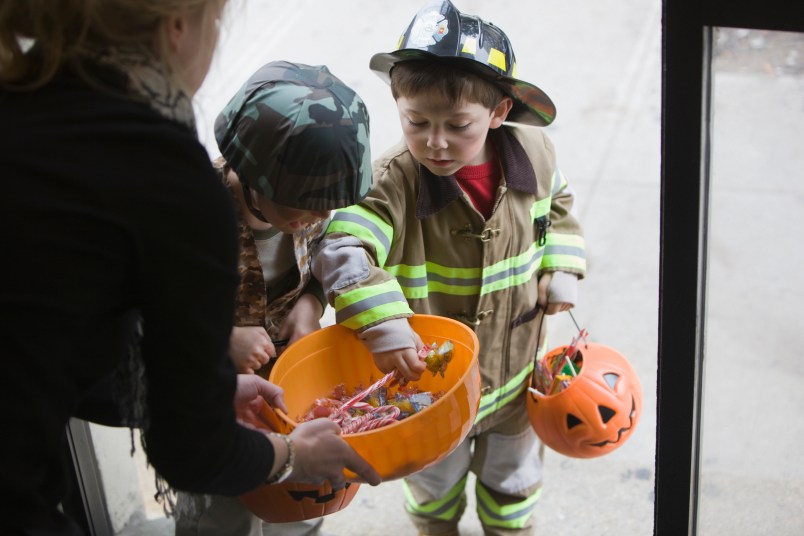Why Do We Give Out Candy on Halloween?

Many of us love giving out candy to kids on Halloween, but have you ever wondered why we do this? The history of trick-or-treating is a fascinating one, to say the least. It traces its roots all the way back to ancient times in Ireland. So as you can imagine, trick-or-treating history didn’t exactly start with people handing out Halloween treats to whomever randomly dropped by their homes.
Where did Halloween come from?
Before we get into the whole trick-or-treat origin story, let’s start from the very beginning: Where does Halloween come from? The modern-day tradition of the spooky holiday in America stems from an ancient Irish festival called Samhaim, according to the National Endowment for the Humanities. Celebrated during the final harvests of the year, the Celts marked the day as one of their most important festivals. Meaning “summer’s end,” Samhaim celebrated the link between seasonal cycles and life cycles — with elements of magic and mystery included. Although that might sound familiar in this early chapter of Halloween history, there was no sign of any tasty trick-or-treating candy — at least not yet.
When did trick-or-treating start?
Samhaim was considered a pagan festival by Christian missionaries, so it was eventually replaced in the eighth century by Catholic traditions. These included religious-themed holidays like All Saints’ Day, All Hallows’ Eve, and All Souls Day. But after a few centuries passed, old customs — such as asking neighbors for cake — began to make a comeback in Europe, though in a religious context this time around.
Believe it or not, kids used to be required to sing for their supper (meaning, of course, their sweets). The little ones were supposed to sing songs on behalf of the dead, and they went from door to door serenading anyone who would listen. In return, these folks gave them “soul cakes,” round baked goods with crosses on the top.
Why do we give out candy on Halloween?
The trick-or-treat tradition as we know it today slowly evolved in the United States as waves of European immigrants moved to the country in the late 1800s and the early 1900s. Interestingly enough, the first description of the words “trick or treat” actually appeared in a Canadian text in 1927: “The youthful tormentors were at back door and front demanding edible plunder by the word ‘trick-or-treat’ to which the inmates gladly responded and sent the robbers away rejoicing.” (Don’t worry about the language; the tone here was intended to be a playful one.)
Trick-or-treating basically paused during the Great Depression and World War II, but it finally resurfaced after the war was over. At this point, you’re probably wondering: Why do we pass out candy on Halloween instead of soul cakes now? Why do we trick-or-treat differently today than we did before?
As it turns out, candy was simply much more popular after the war than soul cakes were, so kids began to receive those sweets instead. So unless soul cakes make a comeback, you can probably expect to continue giving out trick-or-treat candy for years to come. But don’t expect any young people to sing to you before you dole it out of those Halloween candy bowls!












